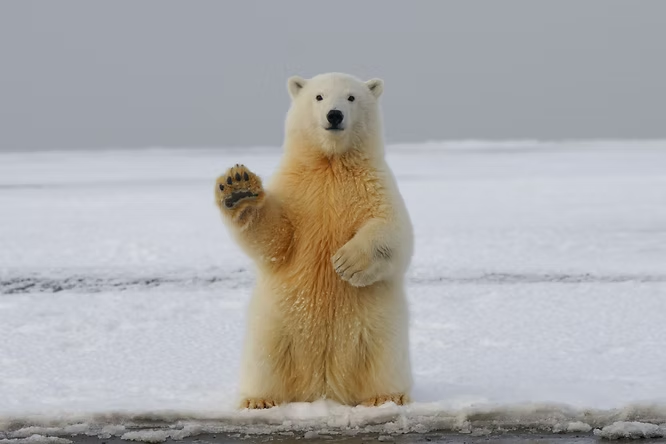Climate Change and Zooplankton in the Arctic
Climate-driven changes in sea ice and currents may lead to smaller, less nutritious zooplankton, according to a new NOAA Fisheries study. Zooplankton are essential prey for whales that migrate to the Chukchi Sea, and shifts in their abundance and quality could ripple through the entire marine food web—affecting fish, seabirds, walrus, and even human communities that depend on bowhead whales for subsistence.
Zooplankton: The Foundation of the Arctic Food Web
Zooplankton include shrimp-like animals such as copepods and krill. They feed on algae, and in turn, become food for forage fish, whales, seabirds, and other marine animals. In the Chukchi Sea, one species in particular—Calanus glacialis—plays an outsized role. Large and energy-rich, it provides a vital food source for bowhead whales that migrate through the region twice a year. Bowheads feed heavily in hotspots such as the Barrow Canyon, which also makes them a critical subsistence resource for Alaska Native communities.
The Role of Sea Ice
The study analyzed zooplankton communities between 2010 and 2012, years that featured very different climate conditions. In colder years, less southern water flowed into the Chukchi, and sea ice persisted longer. These conditions supported greater diversity and higher numbers of C. glacialis, whose life cycle is closely tied to ice algae production. When ice melts gradually, algae are released at the right time to fuel zooplankton growth. However, in warmer years, ice retreats earlier, disrupting this timing and reducing the productivity of these nutrient-rich copepods.
Warming Tradeoffs
Interestingly, warmer years also revealed unexpected changes. Researchers found evidence of locally produced euphausiids (krill), previously thought to originate only from the Bering Sea. The presence of young krill suggests that warmer waters may support both local krill production and greater transport from the south. This could provide bowheads with alternative food, though it remains unclear whether krill can fully replace the nutritional value of C. glacialis.
Arctic Amplification
The Arctic is warming faster than any other region on Earth. In the Chukchi Sea, sea ice is thinning, melting earlier, and retreating farther each decade. Between 2001 and 2014, water transport from the Bering Sea into the Chukchi increased by 50 percent, accelerating ice melt. Climate models project that the Arctic could be nearly ice-free in summer between 2040 and 2060, reshaping ecosystems in ways that scientists are still working to understand.
What Lies Ahead?
Although the study highlighted clear differences between cold and warm years, the researchers caution that these are snapshots of a dynamic system. Continued monitoring will help determine how winds, currents, and seasonal cycles interact to shape zooplankton “hotspots.” Some projections suggest longer plankton seasons with higher overall abundance, but the nutritional quality and timing of food sources may shift dramatically. For whales and the people who depend on them, these changes could alter centuries-old migration and hunting traditions.

